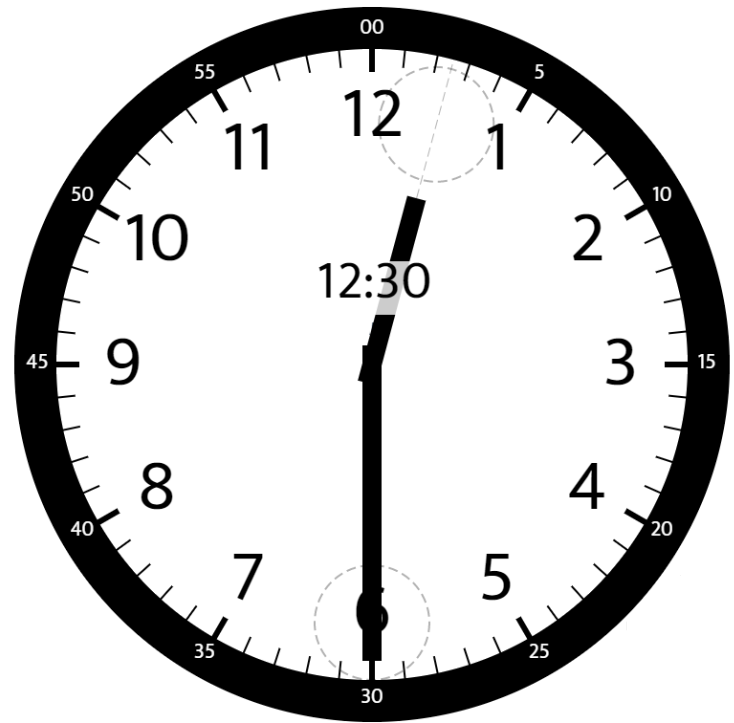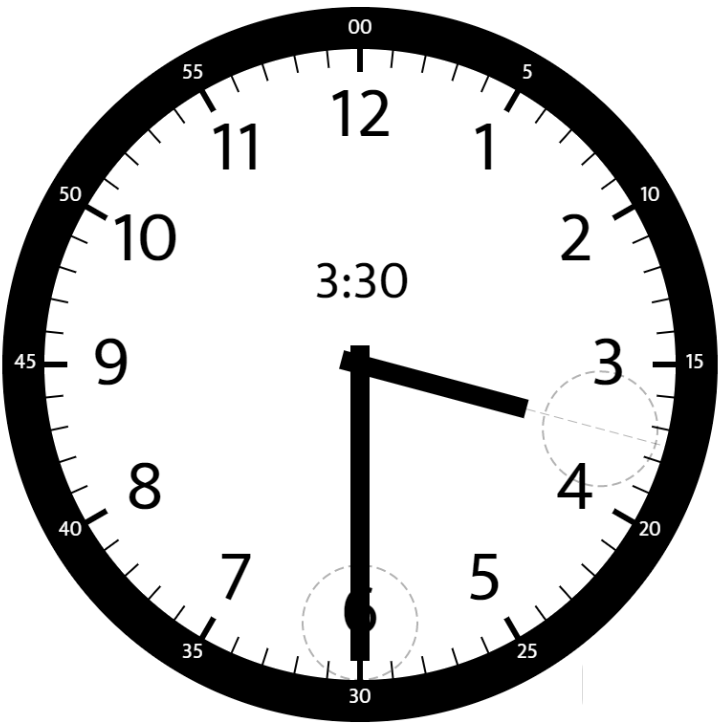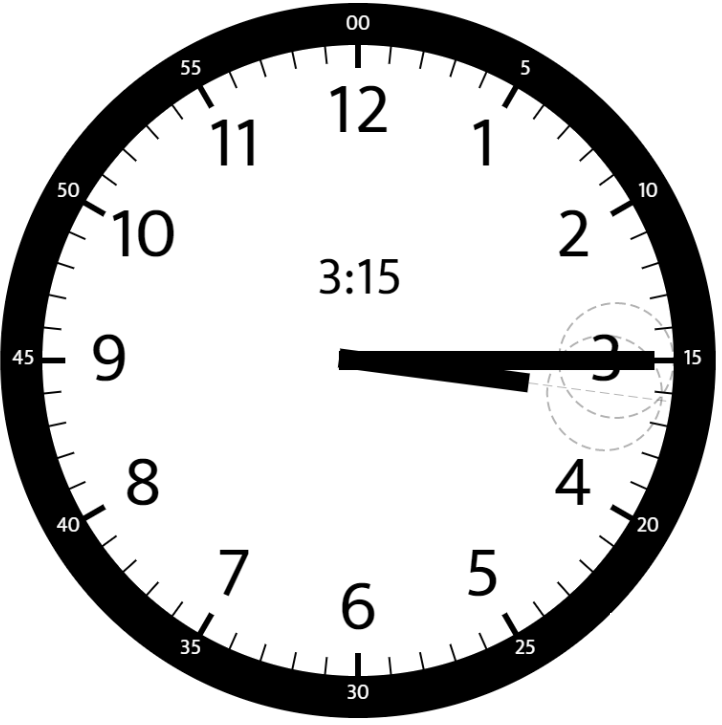- {x}
- Number of Transactions per Visit
- The K Weakest Rows in a Matrix
- Reduce Array Size to The Half
- Maximum Product of Splitted Binary Tree
- Jump Game V
- Movie Rating
- Number of Steps to Reduce a Number to Zero
- Number of Sub-arrays of Size K and Average Greater than or Equal to Threshold
- Angle Between Hands of a Clock
- Jump Game IV
- Check If N and Its Double Exist
- Minimum Number of Steps to Make Two Strings Anagram
- Tweet Counts Per Frequency
- Maximum Students Taking Exam
- Students With Invalid Departments
- Count Negative Numbers in a Sorted Matrix
- Product of the Last K Numbers
- Read More...

Angle Between Hands of a Clock
Given two numbers, hour and minutes, return the smaller angle (in degrees) formed between the hour and the minute hand.
Answers within 10-5 of the actual value will be accepted as correct.
Example 1:

Input: hour = 12, minutes = 30 Output: 165
Example 2:

Input: hour = 3, minutes = 30 Output: 75
Example 3:

Input: hour = 3, minutes = 15 Output: 7.5
Constraints:
1 <= hour <= 120 <= minutes <= 59
Solution Explanation for Angle Between Hands of a Clock
This problem involves calculating the smaller angle between the hour and minute hands of a clock given the hour and minute.
Understanding the Problem:
A clock has 360 degrees. The minute hand moves 360 degrees in 60 minutes (6 degrees per minute). The hour hand moves 360 degrees in 12 hours (30 degrees per hour) or 0.5 degrees per minute.
Approach:
-
Calculate the position of the minute hand: The minute hand's position is simply
minutes * 6. -
Calculate the position of the hour hand: The hour hand's position is more complex. It moves 30 degrees per hour, plus an additional 0.5 degrees for each minute past the hour. Therefore, the hour hand's position is
(hour % 12) * 30 + minutes * 0.5. We use the modulo operator (% 12) to handle the case where the hour is 12 (which is equivalent to 0). -
Calculate the difference: Find the absolute difference between the hour hand's and minute hand's positions.
-
Find the smaller angle: The smaller angle is the minimum of the difference and
360 - difference. This accounts for cases where the difference is greater than 180 degrees.
Time and Space Complexity:
- Time Complexity: O(1) - All calculations are constant time operations.
- Space Complexity: O(1) - We use only a constant number of variables to store the positions and the difference.
Code Implementation (Python):
class Solution:
def angleClock(self, hour: int, minutes: int) -> float:
h = (hour % 12) * 30 + minutes * 0.5 # Hour hand position
m = minutes * 6 # Minute hand position
diff = abs(h - m) # Absolute difference
return min(diff, 360 - diff) # Smaller angleCode Implementation in other languages:
The approach remains the same across different programming languages. The core calculations are identical, only the syntax varies slightly. See the provided solutions in Java, C++, Go and Typescript for examples. These solutions all reflect the same algorithmic approach with minor adjustments for language-specific features (e.g., Math.abs() vs. abs()).
Example Walkthrough (Hour = 3, Minutes = 30):
- Minute hand position:
30 * 6 = 180degrees. - Hour hand position:
(3 % 12) * 30 + 30 * 0.5 = 90 + 15 = 105degrees. - Difference:
abs(180 - 105) = 75degrees. - Smaller angle:
min(75, 360 - 75) = 75degrees.
The code efficiently computes this smaller angle directly, providing a clear and concise solution to the problem.